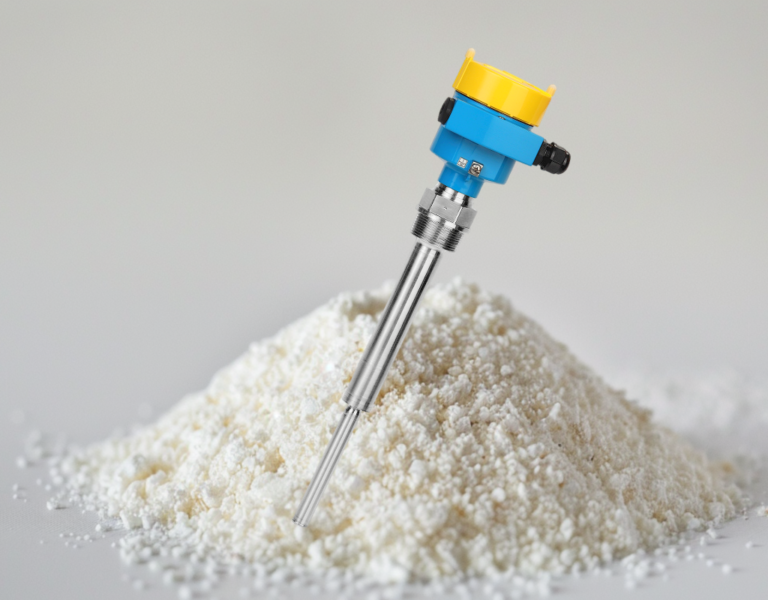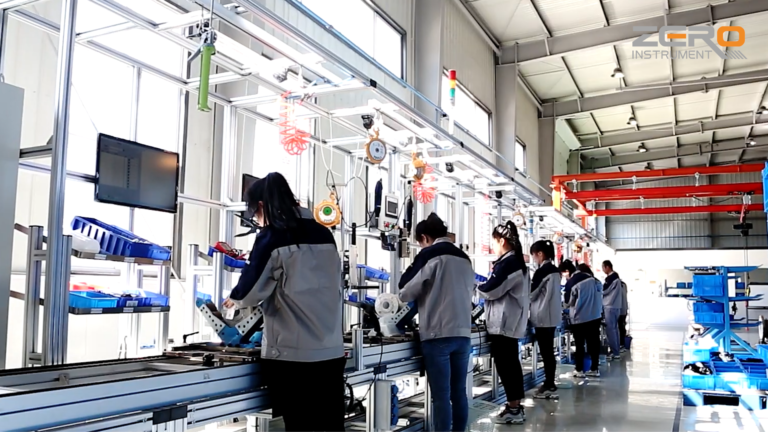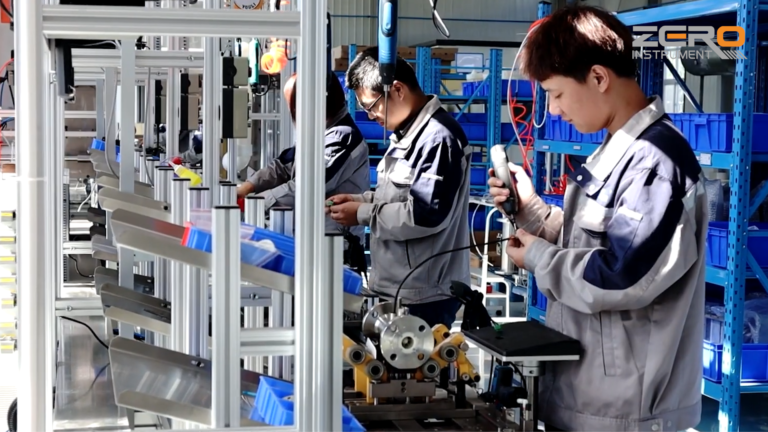A vibrating rod level switch, also known as a vibrating fork or tuning fork level switch, is a specialized device used for detecting the level of materials inside a tank, bin, or hopper. It is predominantly employed in industries to monitor and control the storage of bulk solids, powders, and granular materials. Its reliable performance, resistance to material buildup, and versatility in a wide range of environments make it an essential tool in industrial process automation.
Working Principle of the Vibrating Rod Level Switch
The core component of a vibrating rod level switch is its vibrating probe, typically shaped like a rod or a fork. The fundamental principle behind this device lies in resonance and frequency changes. Here’s how it works:
Vibration Generation: The vibrating rod contains an internal electronic circuit that generates mechanical vibrations in the probe. These vibrations occur at a specific natural frequency when the rod is free of material. The frequency can be around a few kilohertz (kHz), depending on the specific model and design of the switch.
Material Detection: When bulk material comes into contact with the vibrating rod, the vibrations are dampened or interrupted. The extent of vibration reduction depends on the density and the material’s nature. The internal electronics detect this change in vibration and convert it into an electrical signal.
Switch Output: The electrical signal can then be configured to control other equipment or sound an alarm, indicating that the material level has reached a certain point (either a high level or low level, depending on the configuration). In more advanced systems, the vibrating rod can also send signals to programmable logic controllers (PLCs) for further automated process control.

Design Features and Components
Probe (Vibrating Rod/Fork): The probe is the key sensing element that vibrates freely when exposed to air. It is typically made of corrosion-resistant materials like stainless steel to withstand harsh environments and abrasive materials. The length of the rod can vary depending on the depth or the specific requirements of the bin or tank being monitored.
Electronic Housing: The vibrating rod is connected to an electronic housing that contains the circuits responsible for generating vibrations and interpreting the changes. The housing is designed to be dustproof, moisture-proof, and explosion-proof in cases where the sensor is used in hazardous environments.
Mounting Mechanism: The vibrating rod level switch can be mounted in various ways, including vertically or horizontally, to suit the specific application. Flanges, threaded connections, or quick-mounting couplings are commonly used for easy installation.
Advantages of Vibrating Rod Level Switches
Reliability in Various Conditions: Unlike other level detection technologies that might be affected by dust, material properties, or moisture, vibrating rod switches perform consistently across a wide range of bulk solid materials, from fine powders to larger granules and chips. They are unaffected by material properties like dielectric constant or conductivity, ensuring reliable operation in most environments.
Minimal Maintenance: The design of the vibrating rod helps prevent material buildup or clogging, which can be an issue with other types of level sensors. This self-cleaning feature makes vibrating rods ideal for use with sticky or fine powders that may adhere to surfaces in other systems. Routine maintenance is usually minimal, further reducing the total cost of ownership.
Durability: The robust construction of vibrating rod level switches ensures that they can handle abrasive materials and operate effectively in extreme temperatures, pressures, or corrosive environments. The devices are engineered for long life spans even in heavy-duty applications.
Simple Calibration and Installation: Most vibrating rod switches require minimal setup and calibration. The installation process is straightforward, and many units come pre-calibrated from the manufacturer. This makes them ideal for a variety of users, including operators in plants where rapid installation is critical.

Applications of Vibrating Rod Level Switches
Due to their versatility and reliability, vibrating rod level switches find widespread use in numerous industries. Some common applications include:
Bulk Material Storage in Silos and Hoppers: Vibrating rod level switches are widely used in industrial silos, hoppers, and bins to detect the high or low level of bulk materials. They help ensure continuous and efficient operation by preventing overfilling or material shortages.
Cement and Aggregates Industry: In industries dealing with heavy bulk solids like cement, sand, and gravel, vibrating rods are essential for monitoring material levels. They work effectively in dusty environments without performance degradation.
Food and Beverage Industry: Vibrating rods are used for level detection in silos storing grains, flour, sugar, and other powders. They are designed with food-safe materials and meet industry standards for cleanliness and safety.
Chemical and Pharmaceutical Industry: In applications that involve fine powders or potentially hazardous materials, vibrating rod level switches are used for high-precision level control. They can be constructed to resist corrosion and withstand chemical exposure.
Plastics and Recycling: In plastic processing plants and recycling facilities, vibrating rod level switches are used to monitor the levels of plastic granules, chips, and recycled materials. Their robustness makes them suitable for handling a variety of synthetic materials.
Power Generation: In coal-fired power plants and biomass energy production, vibrating rod switches are installed to monitor fuel levels in storage silos, ensuring continuous feed to the combustion system.

Limitations of Vibrating Rod Level Switches
While vibrating rod level switches offer many advantages, they do have some limitations:
Not Suitable for Liquid Applications: Vibrating rod switches are specifically designed for detecting solid materials. In liquid applications, other technologies like float switches or capacitance level sensors are more suitable.
Sensitivity to Low-Density Materials: For extremely light materials like certain dusts or foams, the vibration damping effect may not be sufficient to trigger a response from the sensor. In these cases, other types of level sensors may be needed.
Limited Detection Range: Vibrating rods are generally used for point-level detection rather than continuous level measurement. If continuous monitoring of the material level is required, radar or ultrasonic sensors might be a better option.
Conclusion
The vibrating rod level switch is an essential tool in industrial automation, especially in applications involving bulk solids. Its ability to operate reliably in dusty, abrasive, and harsh conditions makes it a preferred choice in a variety of industries. Its robust design, minimal maintenance, and ease of installation contribute to its widespread adoption in material handling and processing facilities. While not suitable for liquid level detection, its unparalleled performance in solid material applications continues to drive its use across the globe.
